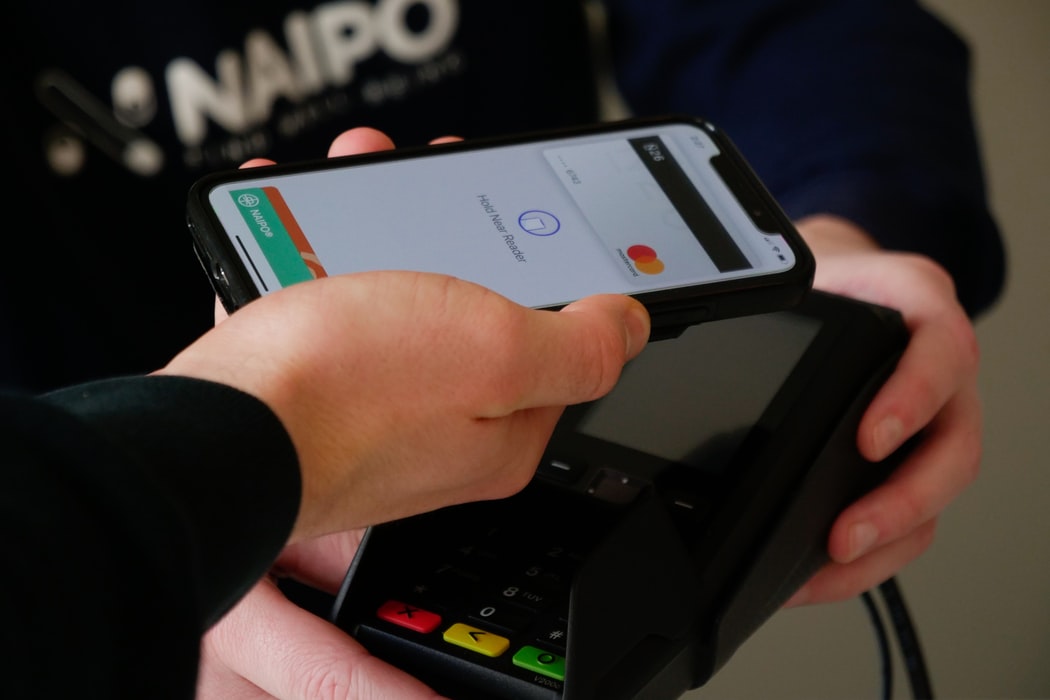Apple pay is one of the more notable digital or e-wallet brands. e-Wallets are popular because of their convenience and security. They eliminate the need for the owner to use actual credit card or bank information details. Apple’s Apple Pay wallet launched in 2014 and has drawn in a big section of Apple users. You can use it to pay for many services and goods in over 30 countries. How does a review of Apple Pay rate this e-wallet?

Source: Unsplash
Solid Brand
Apple has established a name as a pioneering tech brand with some of the most revolutionary gadgets in the world. The iPod changed the way people listened to music, the iPhone’s touchscreen changed the way people interact with their phones, and Macs are legendary in the world of graphic design.
With a big section of the world’s population using Apple gadgets, it was only natural that Apple would come up with a way for them to use their gadgets for payments. Apple Pay was launched in 2014 in the iPhone 6 and is available in iPhone and the wearable Apple Watch. It is in use by over 215 million people.
Closed Wallet
The biggest limitation is that Apple Pay can only be used with Apple gadgets. It is a closed digital wallet. It is also limited to a small section of Apple users considering it is available in less than 40 countries. Apple owners in the rest of the world have to contend with other digital wallets. The problem is that Apple has a very restrictive policy on downloadable apps. Users cannot download their preferred apps from sources apart from Apple’s App Store.
Top Notch Security
Apple Pay uses Near Field Communications (NFC) to communicate with another Apple device or payment terminal. NFC transmissions are very hard to sniff and crack. Even if someone gets their hands on the device, they must verify their credentials.
Apple Pay uses facial and fingerprint recognition for ownership verification. These two biometric security features are stronger than any password, since it is impossible to clone someone’s face.
After tapping to pay on a POS, the owner must pass verification. Online payments on an Apple device must also be verified. At the point of checking out, the owner must verify with a fingerprint or facial scan. The device will tick green if the verification passes.
The security on the Apple Watch has gone even a notch higher. The device reads the wearer’s skin pattern. The device can only allow payments if the device is in contact with the wearer’s skin. no transactions can pass once this contact is broken.
Apple’s Find My iPhone feature is very useful when a device with Apple Pay is lost. You only need to log into your iCloud and use this feature to block any transactions from the device. There is no hassle of canceling credit cards.
Wide Compatibility
Apple Pay is compatible with all major credit card brands: Mastercard, Visa, Amex and Discover. It also connects to all major banks: American Express, Capital One, Citi, Bank of America, HSBC, Chase, and Wells Fargo. Apple is continuously adding more financial services to the platform. Apple Pay connects to all major retailer brands and service providers.
One of the more interesting uses has been online payments at online casinos. There are several online casinos that have connected to the platform. They include 777, 888, CasiGo, Casumo, LeoVegas, Jonny Jackpot, Captain Spins, and Mr. Green.
Faster Transactions
It is faster to tap and pay than input credit card information at a store’s POS or online merchant. The merchant also has fewer errors to deal with which quickens payment processing.
Apple Pay is a solid e-wallet in terms of security and convenience. If you already have an Apple device, it is probably the best and most obvious option you have. If Apple fixed its accessibility by Apple users in the wider world, it has the potential to become the number one digital wallet of choice.


